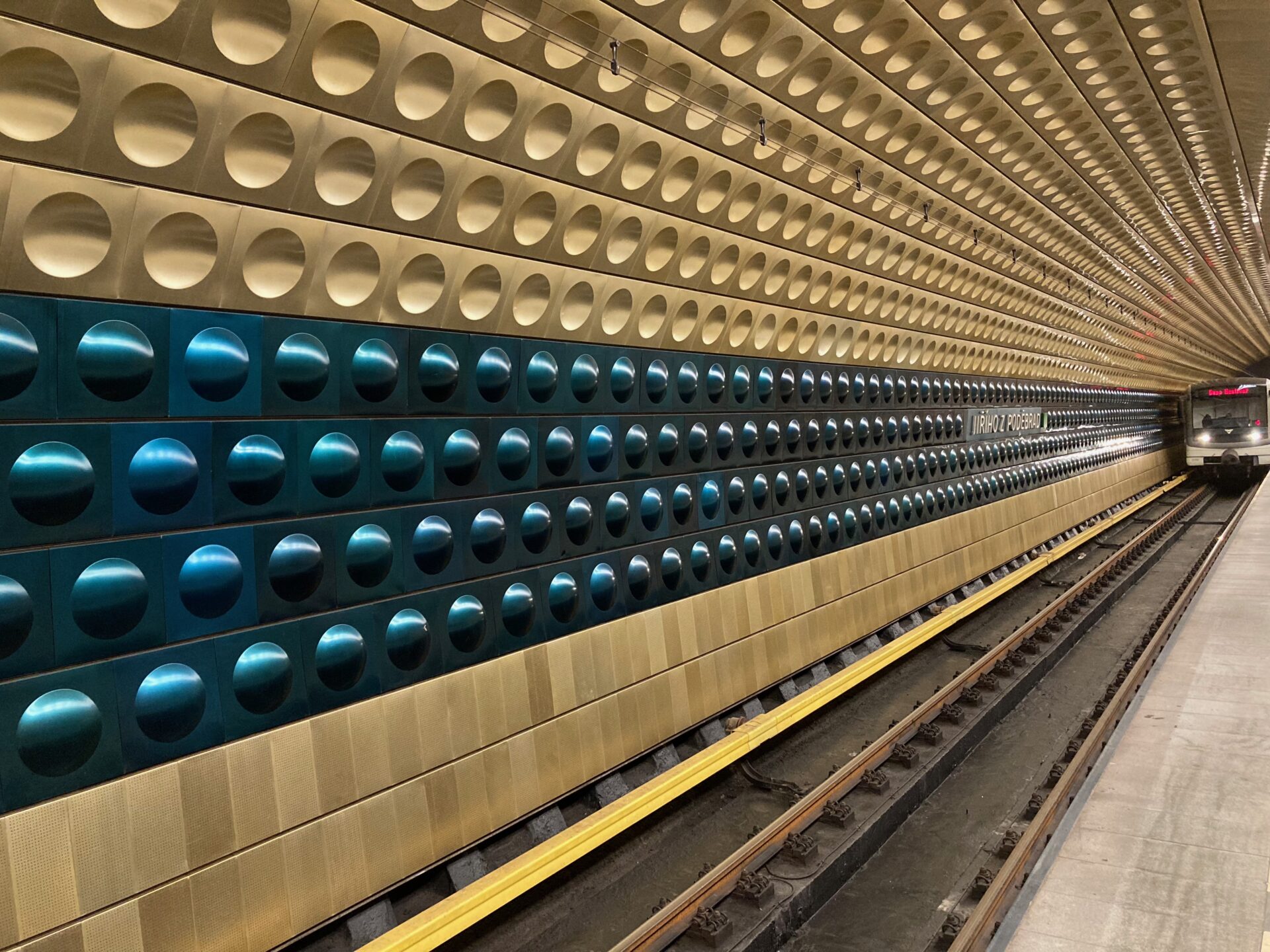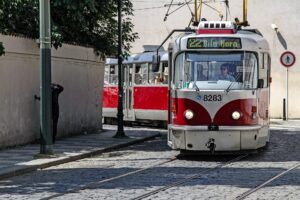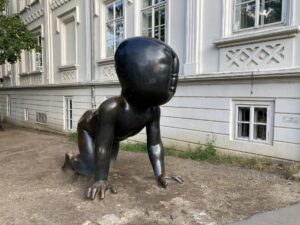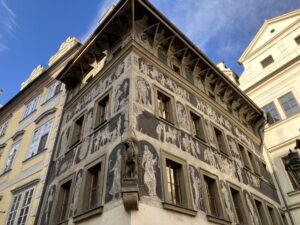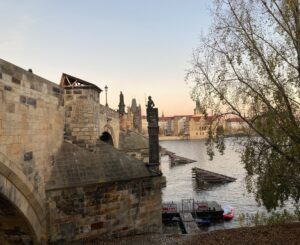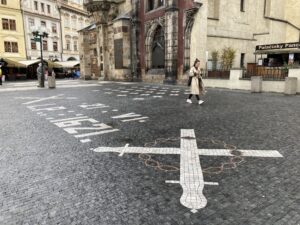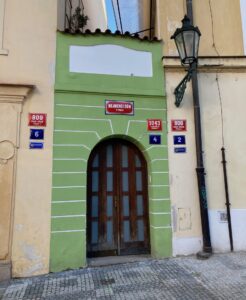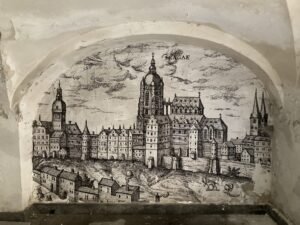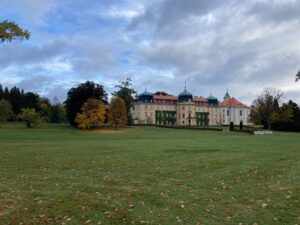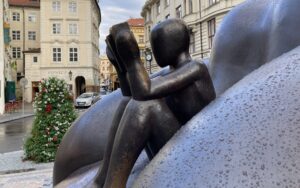Prague’s public transport is absolutely reliable, clean, and very cheap. You can travel 24 hours a day all over Prague for the equivalent of 5 USD, and you will arrive everywhere on time, regardless of the traffic situation in Prague. The metro runs underground on its own tracks. Trams have tracks on the street, but cars can only enter their route in exceptional cases, such as when going around an obstacle or crossing the tracks at an intersection. Not even pedestrians can slow them down as trams always have the right of way. Buses are the only type of transport affected by traffic. However, very few of them are in the center, and they have separate lanes in many places. That being said, a visitor to Prague does not actually need buses for anything – as the map shows, they can be reached in the center and wider center by metro, tram, or funicular. It is often more convenient to travel around Prague also by train. Trains are also part of public transport in Prague, so you do not need to buy a separate ticket for them.
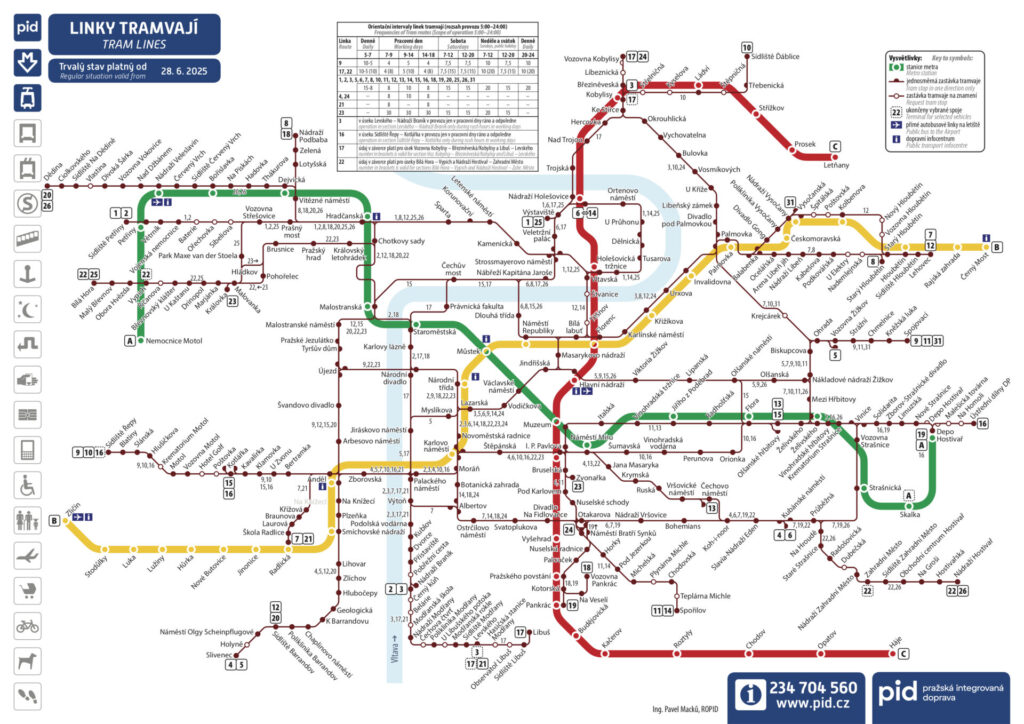
So if you want to enjoy your time in Prague as much as possible, all you need to know is this:
- The fastest and cheapest way to get from the airport is bus No. 59. The bus will take you to the Nádraží Veleslavín metro station in 15 minutes. The table shows that this bus runs from 7 am until the evening with an interval of 3 to 5 minutes. The metro will take you to the heart of the city, to the Staroměstská station, closest to the Old Town Square, in just 9 minutes. In 15+9 minutes, you are in the city center, and the ticket will cost you 30 crowns, not even 1.5 dollars.
- Prague is a beautiful but relatively small city. We have three metro lines, and all metro trains of a given line (A, B, C) run the same route. One track = one route. It cannot happen, which is common in big cities, that different metro lines will be running on the same track, so you have to check which train is arriving. (In Prague, it is enough to know that 90% of places of interest for tourists are on the green route A.)
- A ticket valid for 30 minutes costs 30 CZK, and a ticket valid for 90 minutes costs 40 CZK. For a visitor to Prague, the ticket is either a 24-hour ticket, which costs 120 CZK, or a 72-hour ticket for 330 CZK. In other words: for 5 USD you can travel in Prague all day and night, for 15 USD you can use all transport in Prague (tram, metro, funicular to Petřín, bus, and also train) for three days and nights.
- Three mobile applications offer easy search for connections and their search by departure time or, conversely, arrival time at the destination: Pubtran, IDOS, and “PID Lítačka”. All of them have an English version; the most comprehensive is PID Lítačka, the application of Dopravní podnik Praha, the public transport operator in Prague. You can buy a ticket in all applications, but here you also have other links, including an interactive map of metro, tram, and bus stops, with the numbers of the lines that pass through each stop. You can not only find your way here, but also navigate seemlessly.
Where do I want to go?
To get around Prague ideally, quickly, and cheaply, you only need to know where you are going. More precisely, know the name of the metro or tram stop from which you can take the shortest route to the place you are interested.
There may be more than one of these options. For example, if you are heading to Prague Castle, you can get off at the stops: Královský letohrádek, Pražský hrad, Brusnice, or Pohořelec. That is why we have prepared a table with 70 important places in Prague. The first column contains their names in English, the second in Czech. And the following three columns contain the Czech name of the nearest stop – tram, metro, or bus.
You can download it in pdf here:
By the way, although Prague’s transport system is excellently organised, there has been an illogical renaming of many important tram stations recently. Until recently, passengers heading to the Prague Infant Jesus used to get off at the Hellichova stops, which are not on opposite sides of the street. If you were coming to the Infant Jesus from Malostranské náměstí, you got off the tram right in front of the church entrance. In the opposite direction, from Újezd, the station is moved by about a hundred meters. Today it is good to know that if you are coming from Malostranské náměstí, you get off at the Pražské Jezulátko (“Prague Infant Jesus”) stop. In the opposite direction, however, you have to get off at the Tyršův dům stop, because there is no stop named after the Infant Jesus in this direction. Therefore, the station has a different name in both directions, a unique phenomenon in Prague transport.
